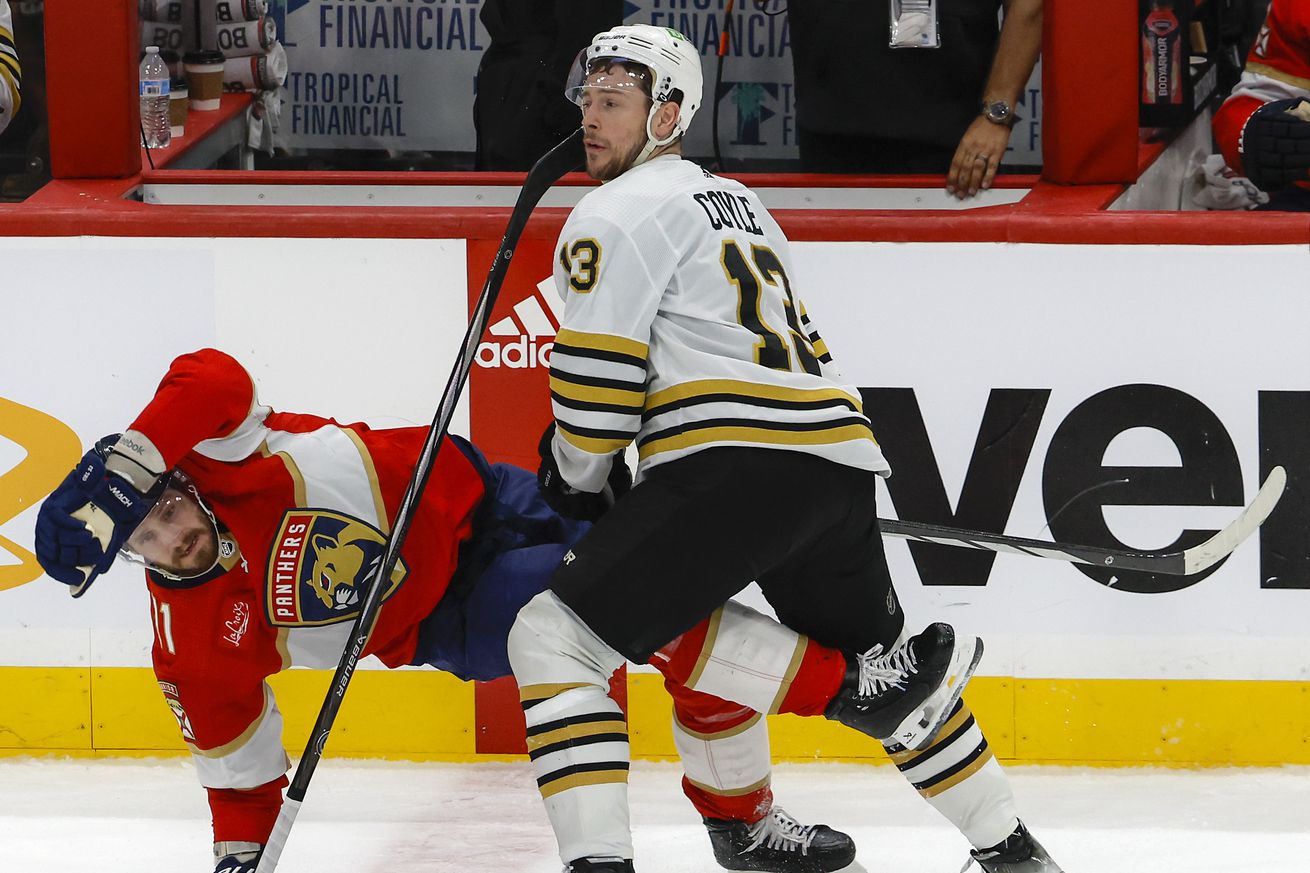
Stepped up when needed.
Charlie Coyle’s 2024 rating: 7.5
Heading into the 2023-2024 season, most of the noise surrounding the Bruins involved their centers — or, more specifically, their lack of centers.
Patrice Bergeron was gone. David Krejci was gone. The Bruins were “stuck” with Pavel Zacha and Charlie Coyle as their best options.
And while it might be a stretch to say Coyle went full Michael Jordan “and I took that personally” meme mode, he responded with a career year and ended being (relatively quietly) a big part of the Bruins’ success.
Jim Montgomery leaned on Coyle more heavily than he did last season, with Coyle averaging 18:04 per game; that was the highest ATOI of his NHL career,
Coyle rewarded Montgomery’s extra ice time with a very productive season, both on the scoresheet and in the harder-to-measure areas of the ice.
Some of the highs were obvious: Coyle’s 25 goals were the most he’s scored in a single season in his NHL career, while his 35 assists were the second-most of his career.
Taken together, Coyle’s 60 points represented the high-water mark for him in the NHL, eclipsing his previous high by four points (way back in 2017).
Logically, if you play more, you’ll score more, but I don’t think a jump of nine goals can be solely attributed to a minute more per game on the ice.
Coyle certainly benefited from some higher-caliber linemates this season, as his most common 5v5 partner was Brad Marchand (per Natural Stat Trick); however, this wasn’t a situation where Coyle was a mere passenger elevated by his left and right wings.
Coyle remained reliable on the penalty kill and also posted the third-best face-off percentage of his career (51.6%).
Possession-wise, Coyle found himself significantly underwater in terms of CF% at even strength (45.3%), but that comes with the pretty significant caveat of him starting nearly 60% of his shifts in the defensive zone.
In terms of negatives, you can certainly point to a career-high shooting percentage of 17% as a potential red flag in the “can he keep it up?” column, but he also showed a willingness to throw more pucks on net (147 shots, the third-most in his career).
Coyle had a disappointing playoffs as well, with just two assists in the Toronto series and a goal and two assists in the Florida series.
For the latter, three points in six games isn’t terrible, but two of those came in the first two games; you can’t help but wonder if things would have gone differently if the B’s had gotten more than an assist from Coyle over the final four games.
(To be fair, you could say that about just about anyone.)
Overall, Coyle had a career year — he more than deserved his 7.5, “exceeded expectations” rating.
It’s funny: if you had asked me, off-guard in a July malaise, “how many goals did Charlie Coyle have last season,” I probably would have guessed 16-18.
You could criticize me for not paying attention (sorry, game time often conflicts with toddler bed time), but I think my point is that Coyle’s career year came relatively quietly, and that isn’t a bad thing.
He was reliable and productive in a bridge-type season when the Bruins really needed him to step up.
He certainly did step up last season, and while Elias Lindholm’s arrival will change Coyle’s deployment this season, he should remain a steady contributor for the foreseeable future.